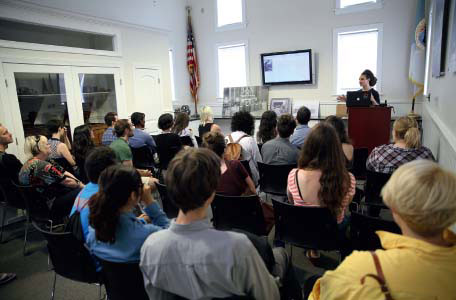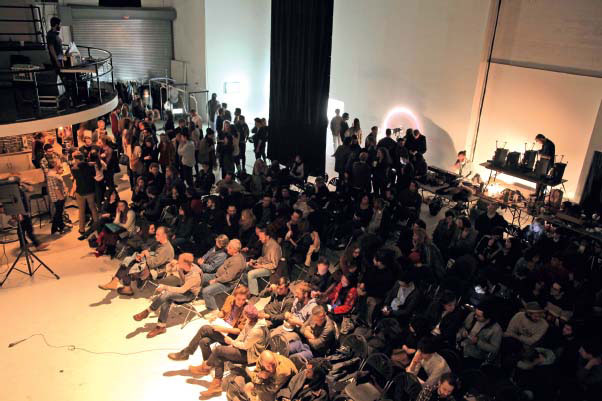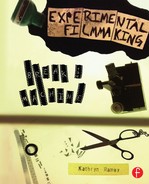I read somewhere the other day, in an interview with Clifford Geertz (great 20th-century anthropologist), that he didn’t write drafts. He said that he sat down and wrote his books from the beginning to the end and that he rarely edited. This gave me heart, because, in truth, this book has gone best when I forged ahead. When I labored over a passage here and there or went back to edit, I descended into uncertainty. I worried as all but the most self-assured or narcissistic worry that I would disappoint all those who have helped me or that the work would reveal me to be stupid, ignorant or foolhardy. I don’t think this is why Geertz didn’t rewrite. He seemed to be saying that the act of writing was formative, transformative and sure. There is an aspect of that here as well.
This book took me forever to write, but it has come together best in the last year of the five years of my contract. That is because I have reached out to the various artists represented in these pages and they have responded to me with great willingness and generosity. The kindness and enthusiasm for this project they have shown at once makes me bashful and gives me courage. I am part of a strong and vibrant and (in contrast to the predictions of many) growing community of people who make things with their hands to share with other people. Some of them share over the web. These days that is the easiest way to stay connected.
But most of us, even if it is once or twice a year, get ourselves to this or that screening or festival and that is when the magic happens. That is where we engage in our posturing and our rituals, and where we feed each other the nourishment that it takes to get on with our day-to-day lives where we are subjects, some of us princes or even kings, in a world that only the people who live in it know or care exists. One of the main questions I asked almost everyone in this book is “What do you call yourself, what you do, how do you explain yourself?” Without fail, individuals admitted, this language is difficult, there aren’t words, I say I’m a professor, I say I’m an artist.
This book, as I probably noted in the introduction, is a thinly veiled ethnography in the sense that it springs from interviews and participant observation and field writing conducted over half my life in the community of which I am a part. In some of my first published writings (Ramey 2002) a reviewer commented about my dispassion in regards to the motivations of avant-garde filmmakers. “But what of love?” she/he said “The passion to do the work?” I responded that love was a difficult thing to theorize but this was an evasion on my part. I was just not ready to admit that I was just as foolish as every other fool who makes this kind of work. It is economically irrational, no one cares about it, people call those of us who use film at best nostalgic, at worst neo-liberal apologists (or something like that).
But there really is something there, something ineffable and yet concrete in the sense that it connects us and encourages us to keep making work and to help each other and to celebrate each other’s triumphs. The title of this conclusion is drawn from two different anthropologists. On the one hand you have the ideas put forward by Benedict Anderson of imagined communities. These are communities that exist via media and other communicative acts, and maintain their cohesion through these long-distance social links in a diaspora. In his book he was talking specifically about how the idea of nationhood was constructed amongst members of a group who did not have face-to-face interaction but participated in similar communication networks and consumed similar media. Edward Said would go on to make use of this concept when he discussed imagined geographies: the perceived notion of a place based on discourse.

FIGURE 14.1
Mono No Aware filmmaking field trip to Black Maria, Thomas Edison workshop in New Jersey. Courtesy of Mono No Aware and Kyle Corea (photographer).

FIGURE 14.2
Double Negative Collectif, Montreal, Canada. A collage of their workspace. Courtesy of the Collectif and Daïchi Saïto.
The experimental film community has this sense of connectedness. Through various listservs and web rings and community-based organizations and festivals and screening series, we somehow maintain a kind of unruly organization. There are internecine battles (what family doesn’t fight?) but these struggles only seem to prove in retrospect how seriously we all take it, how much we are willing to put forward to remain a part. And despite forays into the art world by various social actors or the art world attempting to commodify the work of individuals and despite the commercial media industry constantly forging ahead with the next better best highest resolution digital 4D what not, people somehow still seem to think it’s worthwhile to come together and make work in a material format. And thanks to home-grown community-based organizations like Mono No Aware in Brooklyn, Double Negative in Montreal or L’Etna and L’Abominable in Paris or other microcinemas, artist-run labs and arts organizations worldwide, new filmmakers are being made everyday. New people are becoming interested. And this leads to the idea of communitas.
Communitas is a word that anthropologist Victor Turner borrowed from Latin to describe the sense of togetherness that arises in response to a shared or similar sense of liminality or in-betweenness. Turner spoke about it in relationship to specific non-Western ritual experiences, but his wife, Edith, also an anthropologist, has broadened the scope. She describes communitas as flow, a linking of intent, a willingness or openness in perception. When we artists come together and watch each other’s work and say that it has value beyond what a market might give, or its ability to transmit a specific idea or thought or emotion, when we “get” each other’s work, then we have communitas.
Communitas happens in person and it also happens virtually as we remain connected through social media and the web. People who have never physically met, consider each other friends, even influence each other’s work in a formative way. This communication on and around and about work serves to inspire artists to continue to create even when those most physically proximate to them have less of a connection to their art world.

FIGURE 14.3
Mono No Aware Festival 2013. Courtesy of Mono No Aware and Sean Hanley (photographer).
For me this book is like a chain letter or exquisite corpse. I have collected the rituals and the practices and the words of my friends and colleagues. They have generously given me their time and their images so that I could make something to share with the world. Perhaps there is self-interest there for all of us. But for each person in this book what shines through is the idea that this thing, the art practice, this experimental film, is worth doing. Even though it is difficult to explain to people who aren’t also makers, even though people, parents, loved ones, might not be able to see its value, the contributors in this book do. And they want you to as well. Make something. Share it with the world. Form a community. It may be dreamy or foolhardy to find such joy in a world so full of misery, but for many of us it seems the only way.
I still don’t know how to theorize love, but I know all the people in this book feel great passion for what they do. They experience joy at making it and more at sharing it. And so do I. Here’s hoping the editors grant me a 2nd edition and your work is in it!
All the best,
Kathryn
Anderson, Benedict. Imagined Communities. London: Verso Press, 1998.
Ramey, Kathryn. “Between Art, Industry and Academia: The Fragile Balancing Act of the Film Avant-Garde,” Visual Anthropology Review, Vol. 18, Nos 1–2 (2002): 22–36.
Turner, Edith. Communitas: The Anthropology of Collective Joy. New York, NY: Palgrave Macmillan, 2012.
Turner, Victor. Dramas, Fields, and Metaphors: Symbolic Action in Human Society. Ithaca, NY: Cornell University Press, 1974.
